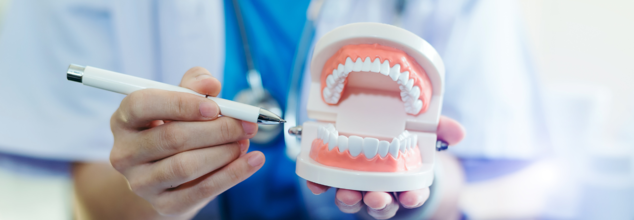- Health Conditions A-Z
- Health & Wellness
- Nutrition
- Fitness
- Health News
- Ayurveda
- Videos
- Medicine A-Z
- Parenting
- Web Stories
Accelerated Biological Aging Could Make You At Risk For Dementia: Study

(Credit-Canva)
We have all heard people say that they are old souls trapped in a young body, however, this is a figure of speech people use. While this phrase may mean you like old school things, it can also happen literally. Sometimes your body ages faster than you do, but this is the biological age we are talking about. While chronological aging is counted as the years we have lived, biological age can be faster or slower.
Think of it as perishable food. If you leave them in unfavorable environments, they can spoil fast, becoming edible. However, when you keep them in the correct environment with even temperature, the food will stay edible for longer than it should. Our bodies are similar in that sense. If you take care of it, limiting processed food, exercising and taking care of your health, you will find that your biological age is much slower or healthier than a person who does the opposite. However, what is the connection between biological aging and our lifestyle. How do we age slower/faster depending on our choices.
A new study suggests that signs of faster aging in your body are connected to a higher chance of developing dementia and stroke. Specifically, researchers found that people with shorter telomeres in their white blood cells tend to have an increased risk of these two brain conditions. These findings were published recently in the journal Neurology.
What Are Telomeres and Why Do They Matter?
Think of telomeres as the protective caps on the ends of your chromosomes, much like the plastic tips on shoelaces. They prevent your chromosomes from unraveling and getting damaged. Every time your cells divide, these telomeres get a little shorter. This makes them a useful way to estimate a person's biological age, which is how much wear and tear your body has accumulated from stress over time, rather than just your age in years. Your biological age can be quite different from your actual age.
Lifestyle Habits Can Counter the Risk
However, there's good news: the study found that this link between shorter telomeres and brain diseases wasn't present in people who maintained healthy lifestyle habits. This suggests that even if your body shows signs of faster aging, you can still reduce your risk of age-related brain diseases. This includes things like keeping a healthy weight, limiting alcohol, getting enough sleep, and exercising regularly. These healthy choices can help delay the aging of your cells and lower your chances of developing these conditions, especially if you're already at a higher risk.
Shorter Telomeres, Higher Risk
For this study, researchers looked at genetic data from over 356,000 people. They categorized participants into three groups based on the length of their telomeres: short, medium, or long. They then compared telomere length to people's lifestyle habits and whether they had developed dementia, stroke, or depression.
Over an average of seven years, nearly 26,000 people developed at least one of these three age-related brain diseases. People with the shortest telomeres had significantly more cases of these brain diseases compared to those with the longest telomeres. Overall, after considering other risk factors, individuals with short telomeres were 11% more likely to develop one of these brain diseases. More specifically, they faced an 8% increased risk of stroke, a 19% increased risk of dementia, and a 14% increased risk of late-life dementia.
It's important to remember that this study shows a connection, not a direct cause-and-effect relationship between telomere length and brain health.
World Blood Donor Day 2025: Thinking of Donating Blood? A Doctor Answers All Your Doubts

Credits: Canva
On World Blood Donor Day, observed every year on June 14, the spotlight turns to the vital act of blood donation—an effort that saves millions of lives each year. Yet, many potential donors still hold back due to confusion or misinformation. To help clear the air, we spoke to Dr. Sangeeta Pathak, Director and Head of Transfusion Medicine at Max Super Speciality Hospital, Saket, about the do’s and don’ts of blood donation. Here’s what we learned.
ALSO READ: Who Can Donate Blood To Whom?
Can Women Donate Blood During Their Period?
This is one of the most common concerns, especially among first-time female donors. According to Dr. Pathak, as per the Drugs and Cosmetics Act, women are advised not to donate during their menstruation, particularly during the 4-5 days of active bleeding. However, they are completely eligible to donate at any other time of the month if they are in good health.
What If You’re Recovering from Illness or Taking Medication?
Health is key when it comes to blood donation. “A person should be completely healthy and free from fever or illness at the time of donation,” says Dr. Pathak. Moreover, certain medications can lead to deferral, and there is a comprehensive list maintained under the Drugs and Cosmetics Act. So if you’re on a prescribed course, it’s best to consult a doctor or the blood bank before donating.
Alcohol, Smoking and Blood Donation—What’s the Deal?
While an occasional drinker may not be entirely disqualified, heavy alcohol consumption is a red flag. “Anyone who is under the influence or shows signs of intoxication should not be donating blood,” Dr. Pathak warns. Ideally, toxic substances like alcohol or nicotine should be avoided for several hours before donation, and if there is an emergency and the only available donor has consumed alcohol recently, it's safest to look for another eligible person.
Basic Eligibility: Age, Weight, and Health
- To donate blood in India, you must be:
- 18 to 65 years old (first-time donors should not be older than 60)
- Weigh at least 45 kg (for 350 ml of whole blood)
- Hemoglobin levels of at least 12.5 gm/dl
For apheresis (platelet or plasma donation), the minimum weight is 50 kg, and the age range is 18 to 60 years. Chronic illnesses and poor general health are automatic grounds for deferral.
Tattoos and Piercings: Are You Temporarily Ineligible?
Yes. If you’ve recently had a tattoo or body piercing, you’ll need to wait 12 months before you can donate blood. This is a precautionary step to ensure there’s no risk of transmitting infections.
TO KNOW MORE, READ: How Long After a Tattoo or Piercing Can I Donate Blood?
What to Eat (or Avoid) Before and After Donation
A proper meal before donating is important, but fasting is not advised. “The donor should not be on an empty stomach, and their last meal should be at least four hours before donation,” explains Dr. Pathak. Avoid fatty foods before donating as they can interfere with blood testing. After donation, staying hydrated and consuming a light snack helps restore energy levels quickly.
A Note on Low Hemoglobin
Women, especially, often have concerns about low hemoglobin levels. If your levels are below 12.5 gm/dl, you won’t be allowed to donate—for your own safety. It’s best to get your iron levels checked regularly if you plan to be a repeat donor.
YOU MAY WANT TO READ: Can You Have Anemia By Donating Blood?
Blood donation is a safe, simple, and generous act that can make a life-or-death difference. On this World Blood Donor Day, let’s pledge to stay informed and encourage more people to donate responsibly. As Dr. Pathak says, “With the right awareness and care, we can all contribute to building a healthier, more compassionate society.”
Tooth Troubles Sent Nearly 2 Million Americans To ER Between 2020 to 2022: Report

Credits: Canva
Tooth disorders led to an average of nearly 1.94 million emergency department (ED) visits each year between 2020 and 2022, according to a recent data brief by the National Center for Health Statistics. The data, drawn from the National Hospital Ambulatory Medical Care Survey, highlights a significant burden on emergency care systems across the United States.
Who’s Going to the ER for Tooth Problems?
The analysis, led by Susan M. Schappert and Dr. Loredana Santo, revealed that adults aged 25 to 34 accounted for the highest proportion of these emergency visits—29.2 percent. While tooth disorders represented 1.4 percent of all ED visits, that translated to about 59.4 visits per 10,000 people annually.
When broken down by race and ethnicity, White non-Hispanic individuals made up the largest share, followed by Black non-Hispanics and Hispanics. Medicaid was noted as the primary expected source of payment, suggesting that many patients with limited access to dental care rely on emergency services for dental issues.
Another notable trend: the prescription of opioids for dental pain relief has dropped significantly. From 2014 to 2016, 38.1 percent of patients were prescribed opioids as the sole form of pain relief. By 2020 to 2022, that figure had fallen to 16.5 percent, indicating a shift in pain management strategies amid growing awareness of the opioid crisis.
What Are Tooth Disorders?
Tooth disorders include a range of conditions that affect the teeth, such as:
- Tooth decay – Damage to the tooth's surface, often leading to cavities
- Abscess – A pus-filled infection, often painful and serious if left untreated
- Impacted teeth – Commonly wisdom teeth that haven’t broken through the gums
- Malocclusion – Misaligned teeth that may affect chewing or speech
- Tooth injuries – Including chipped, cracked, or broken teeth
What Causes These Problems?
Tooth disorders can be caused by various factors, including:
- Poor oral hygiene, such as not brushing or flossing regularly
- High sugar consumption, which can accelerate decay
- Accidents or injuries
- Genetic conditions or developmental issues
Symptoms to Watch Out For
Different tooth problems come with different symptoms, but common warning signs include:
- Tooth pain or sensitivity
- Abnormal color or shape of the tooth
- Swelling or pus around the gums
- Worn-down teeth from grinding or misalignment
Diagnosing and Treating Tooth Disorders
Dentists typically diagnose tooth disorders through a physical examination, using dental instruments and sometimes X-rays. Depending on the issue, treatments may include:
- Fillings for cavities
- Root canals for deeper infections
- Tooth extractions for severely damaged or impacted teeth
- Orthodontic treatment for misalignment
Can They Be Prevented?
Yes—most tooth disorders are preventable with good oral hygiene. Experts recommend:
- Brushing twice daily with fluoride toothpaste
- Flossing or using an interdental cleaner daily
- Limiting sugary foods and drinks
- Avoiding tobacco products
- Seeing a dentist regularly for check-ups and cleanings
Why This Matters
Dental care often gets sidelined, especially for those with limited access to regular services. Yet, as the numbers show, ignoring tooth problems can lead to costly emergency visits and long-term health risks. Promoting awareness and access to preventive care is key to reducing this burden—not just on individuals, but on emergency care systems too.
Alcohol-Linked Liver Disease Deaths On Rise Among Women And Young Adults

Credits: Canva
Deaths due to alcohol-associated liver disease (ALD) are climbing at an alarming rate across the United States, with certain groups being disproportionately affected. A new study published on June 11 in JAMA Network Open found that ALD-related deaths rose nearly 9% each year between 2018 and 2022—more than double the rate of increase seen from 2006 to 2018.
Experts believe this sharp uptick is partly linked to increased alcohol consumption during the COVID-19 pandemic. Other contributing factors include chronic conditions like obesity and hypertension, which can worsen liver health. “It puts numbers to what we’re seeing in the hospital, in the clinic,” said Dr. Brian Lee, a liver specialist at Keck Medicine of USC, in a report to STAT News.
Worsening Trends Among Women and Indigenous Populations
While men still experience more deaths from ALD—17 per 100,000 in 2022—women’s death rates have risen more sharply. In 2022, 8 out of every 100,000 women died from alcohol-related liver disease, a significant jump from 3 per 100,000 at the beginning of the study period. Women’s mortality rate grew at approximately 4.3% per year—almost twice the rate seen in men.
The study also revealed a devastating impact on Indigenous communities. American Indian and Alaska Native adults had the highest cirrhosis death rate in 2022, at 33 per 100,000 people. Additionally, alcohol-associated hepatitis deaths in these groups more than doubled between 2010 and 2022.
Dr. Nasim Maleki, a psychiatry professor at Harvard Medical School, noted that although the pandemic has eased, its long-term effects—particularly in marginalized communities—are still unfolding. “The pandemic itself came under control, but the disparities that came with it continued and lingered,” she said.
Young Adults at Higher Risk Than Before
A particularly troubling trend is the increase in alcohol-associated hepatitis deaths among people aged 25 to 44. This condition can develop quickly and is marked by symptoms like fatigue, jaundice, and liver pain—even in individuals who haven't been heavy drinkers for long.
Liver experts warn that the worst effects of pandemic-related drinking might still be ahead. “Alcohol-related cirrhosis takes time to develop. So we may not see the true extent of the consequences until five, probably 10, years from now, which is very concerning,” said Dr. Robert Wong of Stanford University.
Why Women Face Unique Risks
One reason for the sharper rise among women lies in biology. Cisgender women metabolize alcohol differently than cisgender men, which means their organs may suffer more damage from lower levels of alcohol consumption over time. That’s why current federal guidelines recommend no more than one alcoholic drink per day for women, compared to two for men.
“You’d be surprised by how shocked people are when they hear that drinking more than two drinks per day is considered heavy drinking by federal definitions,” Dr. Lee added.
Public Health Response and the Way Forward
In 2021, over 12,000 deaths from “unspecified liver cirrhosis” were linked to excessive drinking, although that may not always be evident from death certificates. Marissa Esser, who previously led the alcohol program at the U.S. Centers for Disease Control and Prevention, highlighted this hidden toll before the program was disbanded earlier this year.
The American Medical Association is now calling for more public education on alcohol’s risks, including its link to breast cancer. It is also urging clearer labeling on alcoholic beverages to help consumers make informed choices.
Though some data suggests a slight drop in alcohol use since its peak in 2020, it remains uncertain whether this will reduce deaths in the coming years. For now, ALD continues to be the leading reason for liver transplants in the U.S., and alcohol-associated hepatitis is the fastest-growing cause.
© 2024 Bennett, Coleman & Company Limited

